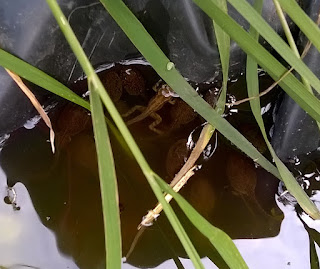This weekend celebrates World Migratory Bird Day. This is an annual event held in the second weekend of May to raise awareness about migratory birds and highlight the issues faced and the need for conservation of the birds and their habitats. The event brought back a great memory of when I went to study little terns (Sternula albifrons), a migratory species to the UK, for my Master's degree thesis.
 |
| The poster for 2015's World Migratory Bird Day, with the theme "Energy". |
It was last summer that I spent a month living and working at Blakeney Point, which is located on the north Norfolk coast in England. The area is a reserve and is currently owned and managed by the National Trust. The location is renowned for being a great wildlife hotspot for a variety of species, but particularly its migratory birds. The little tern is one of the many species of migratory seabirds that can be found here alongside others of the tern family including the sandwich (Sterna sandvicensis) and common tern (Sterna hirundo). As a result of this, Blakeney Point has been designated as one of the most important sites in Europe for ground nesting terns.
 |
One of the many signs surrounding
the colonies at Blakeney. |
The Point received its Site of Special Scientific Interest (SSSI) designation in 1954 and is now also protected under UK law as a Special Protection Area (SPA) and is also a RAMSAR site.
Little Terns have been a regular summer visitor to Blakeney Point since records began and nest in colonies at a few locations spread out up along the beach as well as sharing colonies with other terns at the tip of the point. Currently the biggest threats to the birds are high tides, natural predators, dogs and human disturbance. Some of the colonies have previously been lost due to being washed away and destroyed due to storms and high tides that lead to flooding, a threat that will increase in severity with the challenges associated with climate change.
My study, "Sternula albifrons sheltering behaviour and preferences; is there potential for artificial shelters to increased productivity at Blakeney Point?" gained purpose due to a storm and tidal surge that occurred in the winter of 2013 which caused heavy damage to the shingle ridge that is commonly used by colonies of little terns. This left the ridge barren and void of foliage, which the terns rely upon for shelter. As a result it was decided that they may benefit from artificial shelters being put into the colony to reduce the impact of the loss of foliage. This has been carried out in the past in other countries and locations with varying success, and my study was going to discover whether this could be a viable technique to increase little tern productivity here and lessen the impacts of any more extreme weather events.
 |
My home for the month,
the old lifeboat house owned by UCL. |
In order to cause less disturbance, I visited Blakeney in the spring, to put out the shelters before the birds started to arrive. Fences and signs were put up around the usual colony locations to stop the public from walking through and disturbing the nesting birds or treading on and destroying eggs and nests.
 |
Out every day to get data,
no matter what the weather is like! |
Research began in June, once all of the terns had arrived, started nesting, and chicks were beginning to hatch. It was important to monitor if the chicks were using the shelters to hide, as this was key to my research. Little tern chicks rely heavily on their superb camouflage during their early stages of life to protect them from predation. This tends to be reasonably successful, but it can make your life very difficult if you are trying to keep track of numerous chicks at the same time and monitor their behaviour!
 |
| My view, monitoring the colony. |
For the first part of the study, I was observing 6 chicks in the colony where the shelters were placed and towards the end of the study, unfortunately only one was left. This tern chick was affectionately named "Beast" due to its aggression towards neighbouring nesting ringed plovers (Charadrius hiaticula), consistently facing up to bigger birds, perhaps the reason for its success.
 |
| Little tern chick being fitted with coloured leg rings. |
The project also involved placing camera traps in the colonies, to attempt to catch footage of birds using the shelters. This gave some good entertainment, with inquisitive starlings (Sturnus vulgaris) and oystercatchers (Haematopus ostralegus) poking around in front of the lens. Towards the end of my time there, some members of the RSPB turned up during research and we were able to be involved in the catching and ringing of chicks in the larger colony so that their migration and success can be monitored.
My study learnt that little tern chicks spend the majority of their time in some form of shelter but this slowly decreases in time with age. Nearer to their time of fledging, chicks spent on average 15% less time sheltering than they did post-hatching. Unfortunatly, strong conclusions could not be drawn on whether the use of artificial shelters would increase the productivity of little terns due to the small sample size and the fact that only Beast fledged successfully from this colony, the same as the previous year with only one successful individual. The whole trip was a once in a lifetime experience, though i'll definitely go back there if I can.
 |
| Little terns on the beach. |
I would recommend Blakeney Point to all bird enthusiasts or anyone who enjoys beautiful locations and interesting varieties of wildlife. For more information about the Blakeney National Nature Reserve and planning trips there, visit the National Trust website at: http://www.nationaltrust.org.uk/blakeney/







































